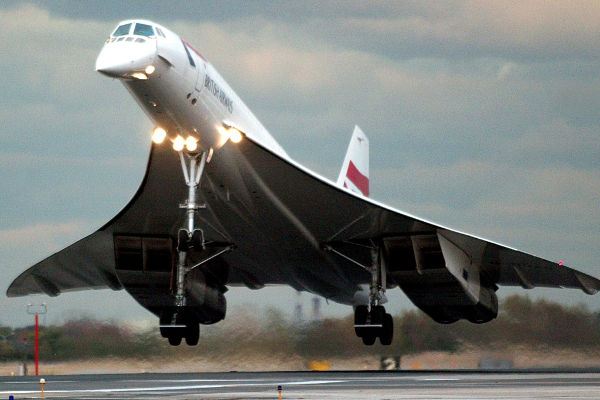Just over fifteen years ago, the British-French supersonic passenger airliner, Concorde, made its final commercial flight before retirement. British Airways and Air France had operated the supersonic services between London and Paris to New York and Washington, since the 1970´s. A flight which would usually take 7 hours, would take 3.5 hours in Concorde.
This droop nosed legend of the skies, had a maximum speed over twice the speed of sound at Mach 2.04 (1,354 mph or 2,180 km/h at cruise altitude) with seating space for between 92 to 128 passengers.
Both companies cited rising operating costs and declining passenger numbers as reasons for retiring Concorde. Three years earlier, in July 2000, a Concorde flight taking off from Paris crashed, killing all 109 people onboard. This immediately hit passenger numbers, which had already been declining since 9/11.
Now, with the help of new legislation in the U.S, supersonic air travel could be making a comeback. Since 1973, supersonic flights in U.S airspace have been banned by the Federal Aviation Administration (FAA). At the time of Concorde’s creation, the FFA were concerned with environmental factors such as the sonic boom emitted when breaking the speed of sound.
In May this year, President Trump signed a bill directing the Federal Aviation Administration to consider lifting the ban. The FAA complied and reauthorized the drafting of a new supersonic framework in conjunction with the industry. The U.S senate added language to the FAA re-authorisation bill calling on the agency to set certification standards. The senate stopped short of a complete repeal of the ban, to ensure the industry complies with strict take-off and landing noise requirements, and emissions standards, before moving forward.

A new generation of aviation start-ups, backed by wealthy investors who wants faster air travel, are already testing technologies which could be used in a new breed of supersonic jets. Environmentalists are concerned that a return to supersonic travel will see increased emissions and polluting carbon into the atmosphere.
Concorde was mothballed due to rising maintenance and fuel costs. In the 1970s it was a technologically advanced wonder of engineering. By the time it retired, the cockpit technology was almost antique, with no commercial drive to upgrade the systems. With a new build supersonic aircraft, the technology will be bleeding edge which can only help aircraft efficiency.
It is clear, that to revive supersonic travel, aviation experts must create a plane that operates on the same standards as a conventional jet airliner but till use supersonic technology. With this in mind we might be decades away from achieving a viable supersonic aircraft for commercial use. Lockheed Martin Skunk Works’ X-plane’ is one preliminary design that the company is experimenting with. The X-plane as it is known, is designed to give out a sonic “thump” instead of a boom. It will be interesting to see how this technology develops.

